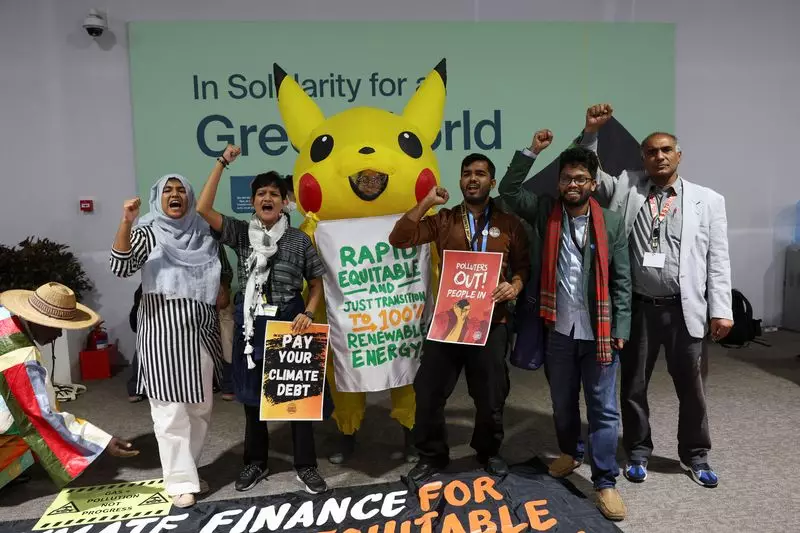As the 29th Conference of Parties (COP29) unfolds in Azerbaijan, a clarion call emanates from nations burdened by both environmental and security crises. Central to their plea is the demand for a dramatic increase in climate financing, urging the global community to double annual aid to more than $20 billion. This financial surge is deemed essential to help these countries grapple with the mounting threats posed by extreme weather events exacerbated by climate change. At a time when the world is witnessing unprecedented environmental challenges, it is crucial to examine not only the scale of the financial need but also the systemic deficiencies that have led to the current predicament.
Countries that have endured conflict often find themselves at the intersection of instability and environmental adversity. Many of these nations, such as Somalia and Yemen, are not just contending with the fallout of war but are also facing the devastating effects of climate-related disasters. Moreover, the financial frameworks designed to assist in recovery and adaptation frequently overlook these conflict-affected areas, relegating them to the margins of international climate discourse. The exigencies presented at COP29 reflect a broader recognition that climate resilience cannot be achieved in silos; rather, it requires an intersectional approach that considers the multifaceted vulnerabilities faced by these nations.
The disparity in climate financing is starkly illustrated by the limited resources that conflict-affected countries have received. In 2022, these nations were allocated a mere $8.4 billion in climate funding, falling significantly short of the amounts deemed necessary for them to adapt and recover. This inadequacy raises pressing questions regarding the effectiveness of global climate finance mechanisms. There is an urgent need to emphasize that climate vulnerability is not just an environmental issue but a deeply societal one—a flood or drought in these regions leads to catastrophic repercussions that reverberate through their already fragile socio-political structures.
Abdullahi Khalif, Somalia’s chief climate negotiator, expresses hope that the newly proposed ‘Network of Climate-vulnerable Countries’ will coalesce efforts and advocate for heightened financing. With members from the g7+ coalition—an intergovernmental assembly comprising fragile states—this network seeks to navigate the complexities of climate funding and leverage collective bargaining power. This is an essential advancement; however, the effectiveness of such networks will depend on sustained political will and the establishment of viable pathways for investment, particularly in contexts perceived as high-risk.
Accessing essential climate funds presents its own set of obstacles for conflict-affected nations. Often labeled as “too risky” for private investment, these countries struggle to attract capital that could address both recovery and adaptation needs. The traditional funding structures often sideline these nations, creating a cycle of neglect that further entrenches their vulnerabilities. Efforts to rectify this must acknowledge that climate adaptation strategies in conflict zones must be adaptive and innovative, targeting investments in resilient infrastructure, sustainable agriculture, and disaster preparedness—elements that should be prioritized in any forthcoming agreements forged at COP29.
It’s critical to recognize the role international organizations, such as the United Nations and the World Bank, must play in reshaping the narrative around funding for vulnerable states. The letter sent by the g7+—calling for a solid commitment to double financing—served as a vital reminder of the heightened urgency. The expectations for an explicit undertaking on finance were usually met with political hesitance, yet these nations cannot afford continued delays. The data presented by UNICEF exemplifies this urgency, highlighting the harrowing likelihood of displacement faced by children born in conflict-ridden areas due to climate-related disasters.
As COP29 progresses, a crucial turning point emerges. The stakes are not merely monetary; they encapsulate the reality that without increased financing efforts, millions of lives will continue to be imperiled by the dual threats of conflict and climate change. To mitigate these risks, the global community must facilitate comprehensive strategies that empower vulnerable nations and ensure that their voices are not only heard but prioritized within international frameworks.
The political landscape must shift towards embracing a more inclusive approach to climate finance—one that recognizes the existing barriers to resource allocation and actively works to dismantle them. Investing in conflict-affected nations is not just an act of benevolence; it is a strategic imperative rooted in global resilience and sustainability. Collective action is essential, but it must be driven by genuine commitments and actionable plans. Only then can these countries hope to navigate the turbulent waters ahead, paving the way for a more stable and climate-adaptive future.

